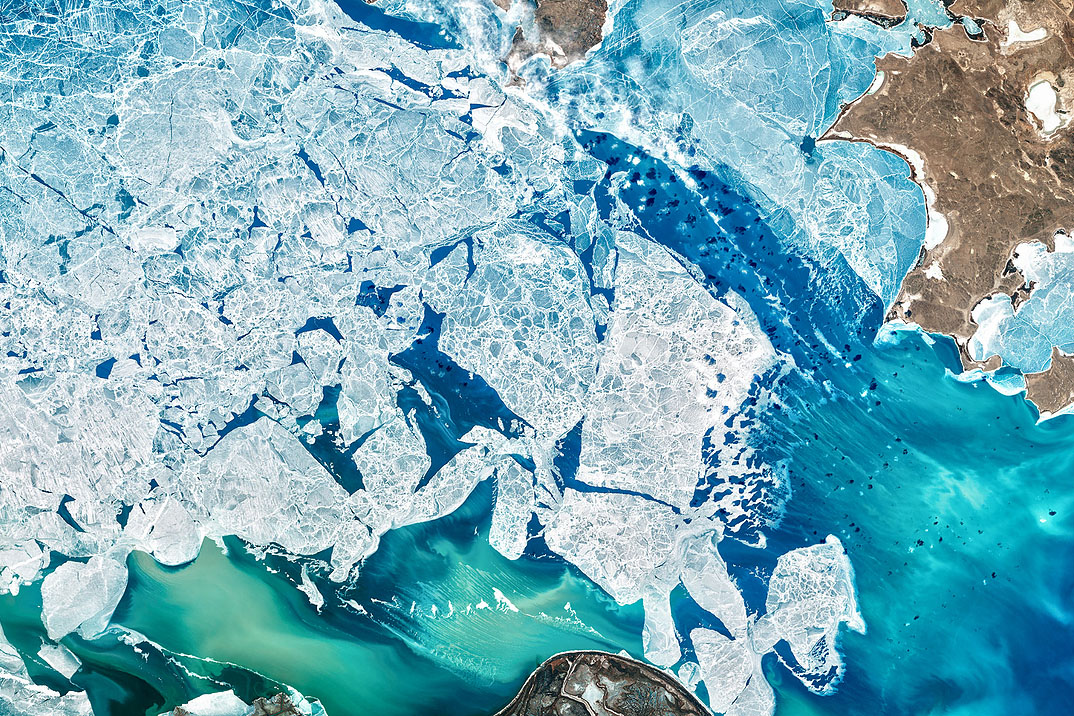News
Climate Change Likely to Affect Communications, Remote Sensing Technologies
Climate change may pose several existential threats, at least in worst-case scenarios — such as rising sea levels, flooded coasts, increased droughts, heat waves and extreme weather events. But the potential “second order” effects, like the impact that long-term changes in environmental conditions might have on technology, haven’t been studied as closely. A team at the Johns Hopkins Applied Physics Laboratory (APL) in Laurel, Maryland, recently studied the potential impact of climate change on communications and remote sensing systems like radars, and determined that severe changes in Earth’s climate would likely affect these technologies — in some cases for better, in others for worse.
“Engineers who design sensor systems, like radars, infrared cameras and so on, are accustomed to having fixed environmental requirements. It doesn’t matter if you design a system now or 10 years from now, they expect the same requirements must be met,” said Jonathan Gehman, an applied physicist at APL, who led the study, which was presented at the 2022 annual meeting of the U.S. National Committee for the International Union of Radio Science.
“We wanted to ask the question: Will that assumption hold, or will climate change alter the environment enough to impact the design of sensor systems? Because if it does — even a little bit — that would be a surprise for designers and engineers who aren’t used to thinking about the environment as an evolving design factor,” said Gehman.
He and his colleagues analyzed data from the World Climate Research Programme’s Coupled Model Intercomparison Project (CMIP5) with a specific focus on factors that are known to impact sensor design and that are understood in terms of how they will play out under various greenhouse-emission scenarios. These factors included increased moisture conditions for radio frequency (RF) and infrared propagation as well as increased sea surface temperatures for RF propagation.
Design Trade-Offs
The team chose seven locations around the world that represented a variety of marine climates. At each location they extrapolated across two alternative future climates, produced by two different possible trajectories of greenhouse emissions — one moderate and one severe.
Their results were surprising, Gehman said. Although most changes were slight, some were significant enough that they may have an impact on next-generation communication systems, as well as navigation and surveillance radars.
“Today, when you’re designing these systems, one of the choices you often have to make is between S- and X-band, which are around 3 and 10 gigahertz, respectively,” he explained. “The trade-off is that with S-band, you can see further through the atmosphere, but with X-band and other high-frequency bands, you get better resolution and more bandwidth and a less crowded spectrum.
“And what we found was that, over the next 50 years, in the severe scenario, that differentiation is likely to become more pronounced,” he continued. “The longer-range advantage of S-band will improve, and X-band and higher frequencies will degrade as a result of increasing moisture in the atmosphere.”
Surprising Findings in the Arctic
Two of the seven analysis locations were in northern waters that are currently ice-bound for a portion of the year. As ice coverage reduces and waters warm, the somewhat-paradoxical finding was that designing sensors for use in the Arctic — generally considered an extreme environment and thus a limiting factor in design — may not be as difficult in the future climate.
“Right now, conditions in the Arctic create a relatively short radio horizon, on average, compared to most other areas of the world. However, our study found that as the Arctic becomes more open, it will also become a bit more like a standard body of water from the standpoint of what the radar can see on the surface,” said Gehman. “So that may actually ease concerns about radar use in this region, because those conditions are going to relax a bit in the coming decades.”
An Evolving Understanding
Many unknowns remain — most significantly, the effects of changing rainfall, cloud cover and aerosols on sensor systems.
“We’ve looked at a very narrow slice of effects on technology in this initial study, but it’s clear that the effects of climate change should be on everyone’s radar screens,” Gehman said. “Here, in our role supporting the nation’s missile defense systems, we have highlighted the potential impacts of climate change on these systems.”
Gehman’s APL team included Rebecca Eager, Benjamin Sheppard, Thomas Hanley, Ben Weaver, Pete Winstead and Fred Rosa.
This defense systems adaptation study is part of APL’s broader efforts to address the national and global challenges associated with climate change. To learn more about these efforts, please visit APL’s Climate Security portal.
